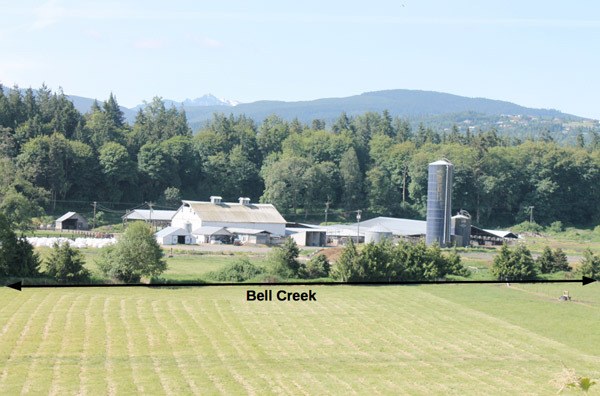Existing, on-going agriculture workshop
What: An open house to discuss agriculture and critical areas issues with agencies, including a presentation on agriculture-related activity in relation to wetlands and stream.
When: 6 p.m. Tuesday, May 24
Where: Dungeness Schoolhouse, 2781 Towne Road
More info: Contact Greg Ballard, Clallam County senior planner, at 565-2616.
To help ensure viable farming and protection of the area’s critical areas, changes to Clallam County’s agricultural standards are underway.
County officials are editing the Critical Areas Exemption for existing and ongoing agriculture and have proposed to add a section “Best Management Practices on Agricultural Lands” to the county’s Critical Areas Code in response to a legal challenge first sparked by Protect the Peninsula’s Future more than 20 years ago.
Unlike new agricultural activity, the exemption has allowed qualified ongoing agriculture that began prior to the adoption of the interim Critical Areas Ordinance in 1992 to be excused from the full provisions of the code and buffer requirements intended to protect critical areas, such as wetlands and streams.
“We’re not trying to eliminate the exemption that was challenged, but we’re trying to put some more performance standards, monitoring provisions and commitment on the county,” said Steve Gray, Clallam County Department of Community Development deputy director and planning manager, “to ensure that the existing and ongoing agriculture is not further degrading critical areas.”
Gray said, “The key intent is to continue to allow qualified existing agriculture to continue.”
About 800 notices have been mailed to Clallam County properties in the agricultural taxing program and the Agricultural Retention Zoning District. The notices provide information on the proposed updates and details of the upcoming workshops where the Clallam County Department of Community Development and the Clallam Conservation District will present.
The proposed updates apply to existing and ongoing agricultural activities that meet the following criteria: has been in agriculture since June 16, 1992; enrolled in the farm and agriculture land open space taxation program; located within the Agriculture Retention Zoning District; has not ceased the agricultural activity for more than five years; the agricultural activity is located within wetlands, streams or associated buffers.
The updated exemption and associated Best Management Practices likely apply to dairy farms like Maple View Farm in Sequim with Bell Creek running through it, but “larger, commercial farms are typically already doing these things and working through other agencies for that,” Gray said. Thus, the update and newly outlined Best Management Practices will tend to target smaller farms.
“The meat of the changes is to expand upon what are the best management practices that we’re looking for and encourage existing and on-going farmers to continue to use those practices so they continue to farm in these critical area buffers like they have been,” he said.
The ‘right direction’
Protect the Peninsula’s Future — a nonprofit dedicated to environmental protection to enhance the quality of life for present and future citizens of the North
Olympic Peninsula — petitioned the Growth Management Hearing Board shortly after Clallam County adopted its interim Critical Areas Ordinance.
“It’s been since 1995 that this issue has been up,” said Eloise Kailin, Protect the Peninsula’s Future corresponding secretary.
“It’s been decades, but at last” efforts to address the county’s Critical Area Exemption for existing and ongoing agriculture is going in the “right direction,” Kailin said.
Following years of litigations and judicial decisions between the county, nonprofit and state, the Growth Management Hearing Board found the county’s Critical Areas Exemption for existing and ongoing agriculture non-compliant with the state Growth Management Act. The board issued a Compliance Schedule last July allowing the county six months to resolve the issue. The board has issued the county two 90-day extensions and a third one will be sought, according to county officials.
A third extension would allow until July 4 to update the Critical Areas Code to address the Critical Areas Exemption for existing and ongoing agriculture.
“We have a dual goal here to protect,” Kailin said. “We have to protect agriculture, but there are places where that rubs up against the need to protect streams for anadromous fish.”
To achieve both aspects of the goal there needs to be a Critical Areas Ordinance that’s “fair to fish and fair to farmers,” she said.
Attempting to protect farming rights and the health of the environment the county’s proposed updates encompass a new definition for existing and ongoing agriculture, edits to the definition of agriculture and a new section with required Best Management Practices for existing and ongoing agriculture.
“We’re looking forward to working with them (county officials) on the plan and its language,” Kailin said. “We would like to see it written in a flexible manner so that we’re matching ongoing realities.”
In other words, Kailin explained, there needs to be a way to know if there’s a problem associated with exempt agricultural activity in or near critical areas. Consistent with Protect the Peninsula’s Future, part of the county’s update is to monitor in collaboration with existing organizations, such as Streamkeepers and the Washington State Department of Ecology. Gray also anticipates connecting farmers in need of adaptive management strategies with agencies like the Clallam Conservation District.
A public hearing before the Clallam County Planning Commission on the proposed update to the county’s Critical Areas Code is scheduled for 6:30 p.m. Wednesday, June 15, at the Clallam County Courthouse, 223 E. Fourth St., Port Angeles.



